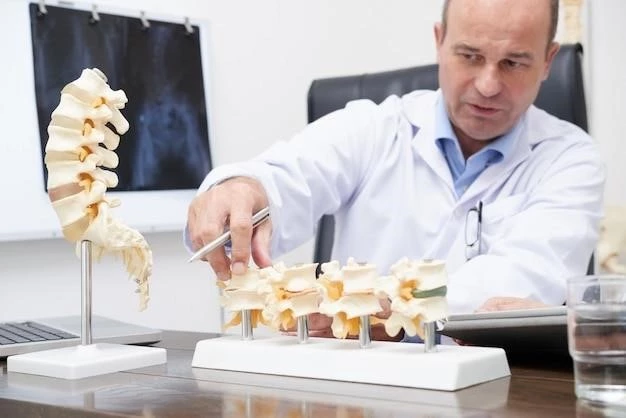Introduction to Spondyloepimetaphyseal Dysplasia, Strudwick Type
Spondyloepimetaphyseal Dysplasia, Strudwick Type is an inherited disorder of bone growth causing dwarfism and skeletal abnormalities․ It affects the spine, arms, and legs․
Spondyloepimetaphyseal Dysplasia, Strudwick Type is a rare inherited disorder affecting bone growth, leading to dwarfism and distinct skeletal abnormalities․ This condition primarily impacts the spine, arms, and legs, causing short stature and vision issues․

Description of the Disease
Spondyloepimetaphyseal Dysplasia, Strudwick Type is characterized by short stature, skeletal abnormalities, and vision problems․ It affects bones in the spine, arms, and legs․
Spondyloepimetaphyseal Dysplasia, Strudwick Type is identified by hallmark features like disproportionate short stature from birth, skeletal anomalies such as lordosis, scoliosis, and unique bone abnormalities like dappled metaphyses․ Patients may experience respiratory issues and distinct facial characteristics․
Spondyloepimetaphyseal Dysplasia, Strudwick Type is characterized by short stature, unique bone abnormalities, and distinct skeletal features including lordosis and scoliosis․
Spondyloepimetaphyseal Dysplasia, Strudwick Type is typically inherited in an autosomal dominant manner, with mutations often affecting the COL2A1 gene٫ responsible for procollagen type II biosynthesis․ These genetic anomalies lead to the characteristic skeletal abnormalities and dwarfism associated with the condition․
Characteristics of Spondyloepimetaphyseal Dysplasia, Strudwick Type
Spondyloepimetaphyseal Dysplasia, Strudwick Type is an inherited bone growth disorder leading to short stature, uniqueness in bone structures, and visual impairments․
Methods for Diagnosing Spondyloepimetaphyseal Dysplasia, Strudwick Type
Diagnosing Spondyloepimetaphyseal Dysplasia, Strudwick Type typically involves a combination of physical examinations, imaging studies like X-rays, genetic testing to identify mutations, and assessing the patient’s medical history․ Additionally, ophthalmologic evaluations may be conducted to detect associated vision issues․
Inheritance Pattern and Genetic Mutations
Spondyloepimetaphyseal Dysplasia, Strudwick Type is typically inherited in an autosomal dominant pattern and involves mutations in the COL2A1 gene affecting bone growth processes․
Individuals with Spondyloepimetaphyseal Dysplasia, Strudwick Type may benefit from a multidisciplinary approach to care involving orthopedic interventions, physical therapy to enhance mobility and strength, vision therapies, and regular monitoring to address potential complications․ Genetic counseling can provide valuable insights into the condition’s progression and guide family planning decisions․
Management Strategies for Patients with Spondyloepimetaphyseal Dysplasia, Strudwick Type
For individuals diagnosed with Spondyloepimetaphyseal Dysplasia, Strudwick Type, a comprehensive management approach comprising orthopedic interventions, physical therapy, vision care, and ongoing monitoring is crucial in addressing the varied needs associated with this condition․ Collaborating with healthcare providers specializing in genetics and skeletal disorders can help optimize treatment plans and improve overall quality of life․

Understanding the Long-Term Outlook for Individuals with Spondyloepimetaphyseal Dysplasia, Strudwick Type
Individuals diagnosed with Spondyloepimetaphyseal Dysplasia, Strudwick Type may face challenges related to skeletal abnormalities, dwarfism, and vision issues throughout their lives․ Regular medical monitoring, adherence to treatment plans, and supportive care can help manage symptoms and improve quality of life for individuals with this condition․
Complications Associated with the Disease
Individuals with Spondyloepimetaphyseal Dysplasia, Strudwick Type may experience complications related to skeletal abnormalities, vision issues, and respiratory problems․ Regular medical monitoring and intervention are crucial to manage these challenges․
Potential Medical Issues Arising from Spondyloepimetaphyseal Dysplasia, Strudwick Type
Individuals with Spondyloepimetaphyseal Dysplasia, Strudwick Type may experience various medical complications such as short stature, skeletal abnormalities leading to mobility issues, and potential respiratory challenges due to chest abnormalities․ Regular medical evaluations and proactive management are essential to address the diverse medical problems associated with this condition effectively․
Lifestyle Modifications for Improved Quality of Life
Individuals with Spondyloepimetaphyseal Dysplasia, Strudwick Type can benefit from lifestyle adjustments such as maintaining a healthy weight, regular low-impact exercises, adapting the home environment for accessibility, and seeking emotional support to cope with the challenges of the condition․
Advisory on Lifestyle Modifications for Improved Quality of Life
When living with Spondyloepimetaphyseal Dysplasia, Strudwick Type, embracing lifestyle modifications can significantly enhance your well-being․ It is crucial to focus on maintaining a healthy weight, engaging in suitable exercises, making necessary home adjustments for accessibility, and seeking emotional support to navigate the challenges of the condition effectively․
For individuals and families affected by Spondyloepimetaphyseal Dysplasia, Strudwick Type, seeking support groups and resources can provide valuable connections to others facing similar challenges․ These organizations specialize in offering assistance, guidance, and a supportive community for individuals navigating this rare bone growth disorder․
Information on Organizations Offering Assistance to Patients and Families
Exploring support groups and resources specific to Spondyloepimetaphyseal Dysplasia, Strudwick Type can offer valuable assistance to affected individuals and their families․ These organizations provide a supportive network, valuable information, and emotional guidance to help navigate the challenges associated with the condition․
Exploring ongoing research and clinical trials related to Spondyloepimetaphyseal Dysplasia, Strudwick Type can provide insight into potential advancements in diagnosis, treatment, and management strategies․ Participation in clinical trials may offer individuals affected by this rare condition access to innovative therapies and contribute to further understanding of the disorder․
Current Studies and Future Directions in Spondyloepimetaphyseal Dysplasia, Strudwick Type
Current research on Spondyloepimetaphyseal Dysplasia, Strudwick Type focuses on further understanding the genetic basis of the condition, developing innovative therapeutic approaches, and enhancing diagnostic methods․ Future directions may include exploring gene therapy interventions, optimizing treatment protocols, and investigating potential targeted therapies to improve outcomes for individuals affected by this rare skeletal disorder․
When considering family planning in the context of Spondyloepimetaphyseal Dysplasia, Strudwick Type, genetic counseling plays a crucial role in understanding the inheritance pattern and risks associated with the condition․ It is advisable to consult with a genetics professional to assess the likelihood of passing on the disorder and explore preventive measures or alternative family planning options to make informed decisions regarding reproduction․
Guidance on Family Planning and Preventive Measures
When considering family planning in the context of Spondyloepimetaphyseal Dysplasia, Strudwick Type, genetic counseling plays a crucial role in understanding the risks and inheritance patterns associated with the condition․ Consulting with genetics professionals can help assess the likelihood of passing on the disorder and explore preventive measures or alternative family planning options, empowering individuals to make informed decisions regarding reproduction․
Coping with the challenges of Spondyloepimetaphyseal Dysplasia, Strudwick Type can impact mental health․ Seek professional help to manage stress, anxiety, and emotional well-being effectively․
Addressing the Emotional Aspects of Living with Spondyloepimetaphyseal Dysplasia, Strudwick Type
Coping with the challenges of Spondyloepimetaphyseal Dysplasia, Strudwick Type can have an impact on mental health․ Seek professional help to manage stress, anxiety, and emotional well-being effectively․ Remember, you are not alone in this journey, and support is available․
Listening to personal experiences and case studies can help individuals with Spondyloepimetaphyseal Dysplasia, Strudwick Type gain insights on coping strategies and navigating challenges associated with the condition․
Real-Life Stories of Individuals Coping with Spondyloepimetaphyseal Dysplasia, Strudwick Type
Spondyloepimetaphyseal dysplasia, Strudwick type is a genetic bone growth disorder․ It affects stature and skeletal integrity, requiring specialized care․ To maintain physical and emotional well-being, engage in suitable exercises, ensure accessibility at home, seek emotional support, and actively participate in managing the condition․ Resources like support groups can also provide valuable assistance in coping with the challenges of this rare disorder․
Understanding the complexities of Spondyloepimetaphyseal Dysplasia, Strudwick Type is crucial for optimal management․ Through a multidisciplinary approach encompassing genetic counseling, specialized medical care, and lifestyle adaptations, individuals can navigate the challenges posed by this rare bone growth disorder effectively․ By staying informed, embracing support networks, and accessing appropriate resources, patients and families can enhance their journey towards improved quality of life․
Summary of Key Points and Closing Thoughts on Spondyloepimetaphyseal Dysplasia, Strudwick Type
Spondyloepimetaphyseal Dysplasia, Strudwick Type is a rare genetic disorder affecting bone growth, with characteristic skeletal abnormalities and vision problems․ Understanding the genetic basis, seeking specialized care, and engaging in a multidisciplinary approach are crucial for managing the condition effectively․ By staying informed, accessing support networks, and exploring research advancements, individuals with this disorder can navigate the challenges and improve their quality of life․
